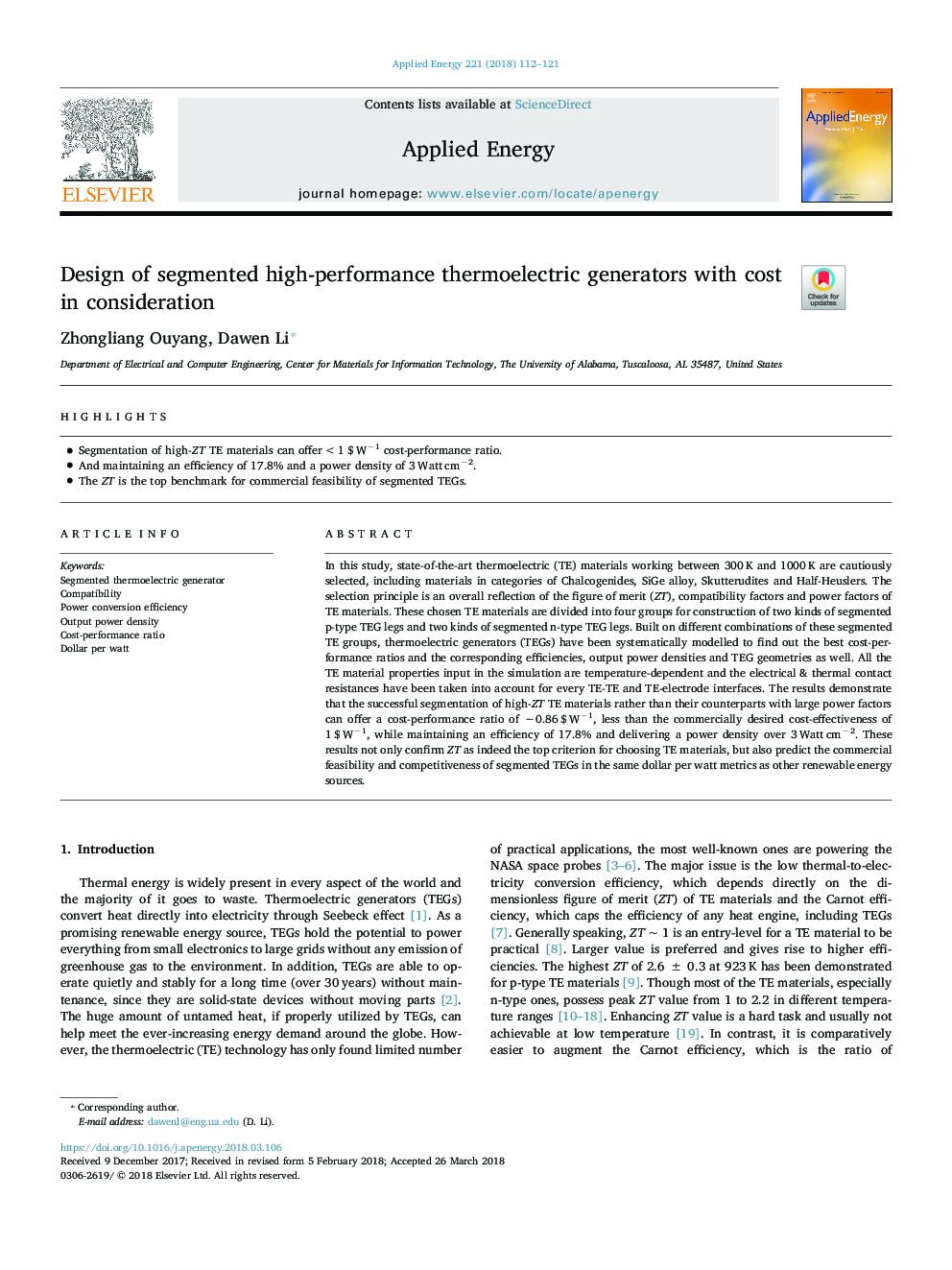| Article ID | Journal | Published Year | Pages | File Type |
|---|---|---|---|---|
| 6680105 | Applied Energy | 2018 | 10 Pages |
Abstract
In this study, state-of-the-art thermoelectric (TE) materials working between 300â¯K and 1000â¯K are cautiously selected, including materials in categories of Chalcogenides, SiGe alloy, Skutterudites and Half-Heuslers. The selection principle is an overall reflection of the figure of merit (ZT), compatibility factors and power factors of TE materials. These chosen TE materials are divided into four groups for construction of two kinds of segmented p-type TEG legs and two kinds of segmented n-type TEG legs. Built on different combinations of these segmented TE groups, thermoelectric generators (TEGs) have been systematically modelled to find out the best cost-performance ratios and the corresponding efficiencies, output power densities and TEG geometries as well. All the TE material properties input in the simulation are temperature-dependent and the electrical & thermal contact resistances have been taken into account for every TE-TE and TE-electrode interfaces. The results demonstrate that the successful segmentation of high-ZT TE materials rather than their counterparts with large power factors can offer a cost-performance ratio of â¼0.86â¯$â¯Wâ1, less than the commercially desired cost-effectiveness of 1â¯$â¯Wâ1, while maintaining an efficiency of 17.8% and delivering a power density over 3â¯Wattâ¯cmâ2. These results not only confirm ZT as indeed the top criterion for choosing TE materials, but also predict the commercial feasibility and competitiveness of segmented TEGs in the same dollar per watt metrics as other renewable energy sources.
Keywords
Related Topics
Physical Sciences and Engineering
Energy
Energy Engineering and Power Technology
Authors
Zhongliang Ouyang, Dawen Li,
